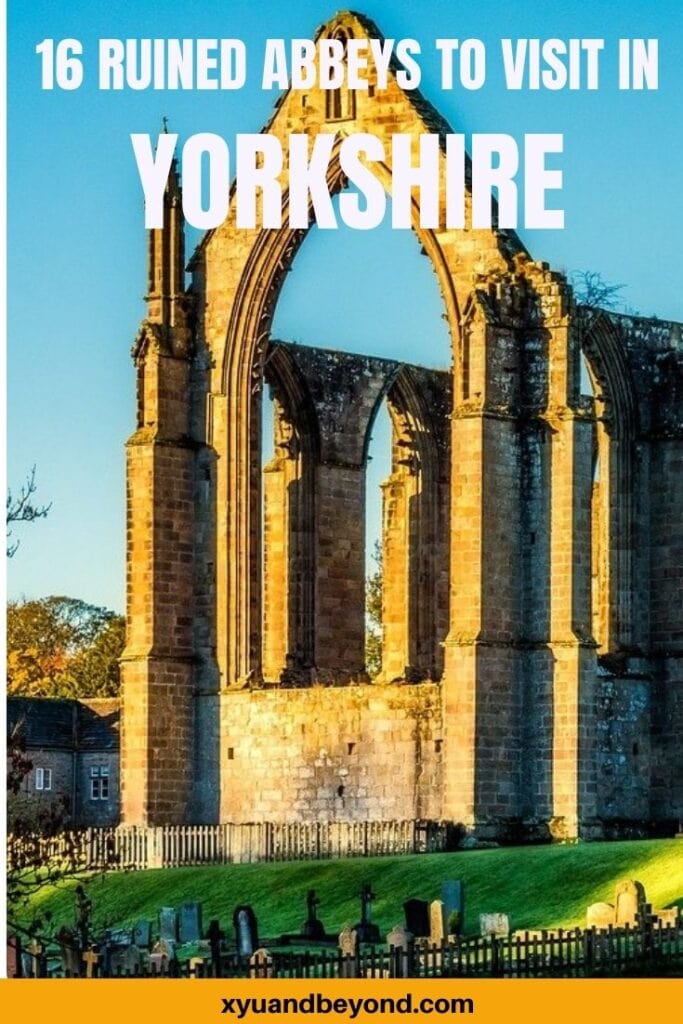16 Evocative Ruined Abbeys in Yorkshire
Yorkshire has to be one of my favourite places in England. I first travelled to Yorkshire for a housesit and fell in love with the area. There is so much to see and do in the county and the history is captivating.
From the amazing city of York with its medieval Shambles to some of the most fascinating ruined abbeys in the entire country. The Yorkshire Coast and Yorkshire Dales are a hiker’s dream and although many Yorkshire Abbeys are hard to get to without a car you will find lots of historic sites to visit without a vehicle.
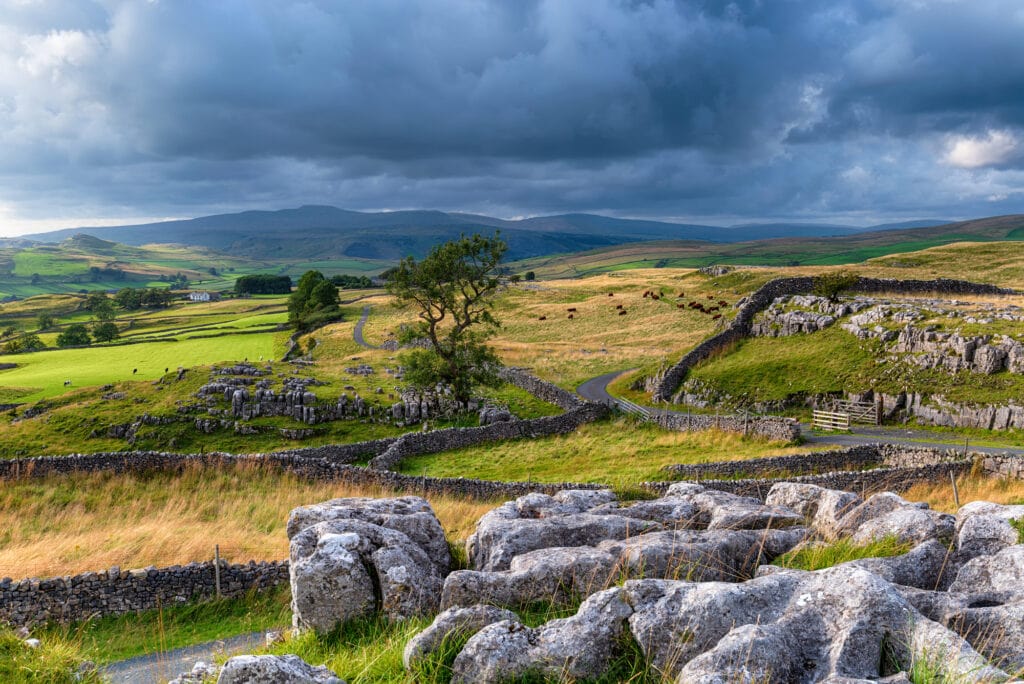
Yorkshire is England’s largest county and known as God’s Own Country. Yorkshire is a historian’s dream and it is a place where you can not only feel the history buried deep in the stones and the land you can walk the Yorkshire Dales, hike the rugged coastline and enjoy dozens of ancient villages and market towns.
The largest area is North Yorkshire, stretching from the Pennines in the west, to the northeast coast, covering nearly 3500 square miles. It’s a varied landscape and hosts two national parks. The North York Moors, with its spectacular heritage coastline, is a joy to behold. The Yorkshire Dales with its high peaks, low valleys, flowing rivers and patchwork fields ribboned with dry stone walling, is simply outstanding.
Yorkshire was founded by the Romans and then passed to the Vikings when it became known as the Kingdom of Jórvík the Christians called it the Kingdom of Northumbria. The invading Danes created the Yorkshire we know today which consists of a North, East and West Riding, along with the City of York.
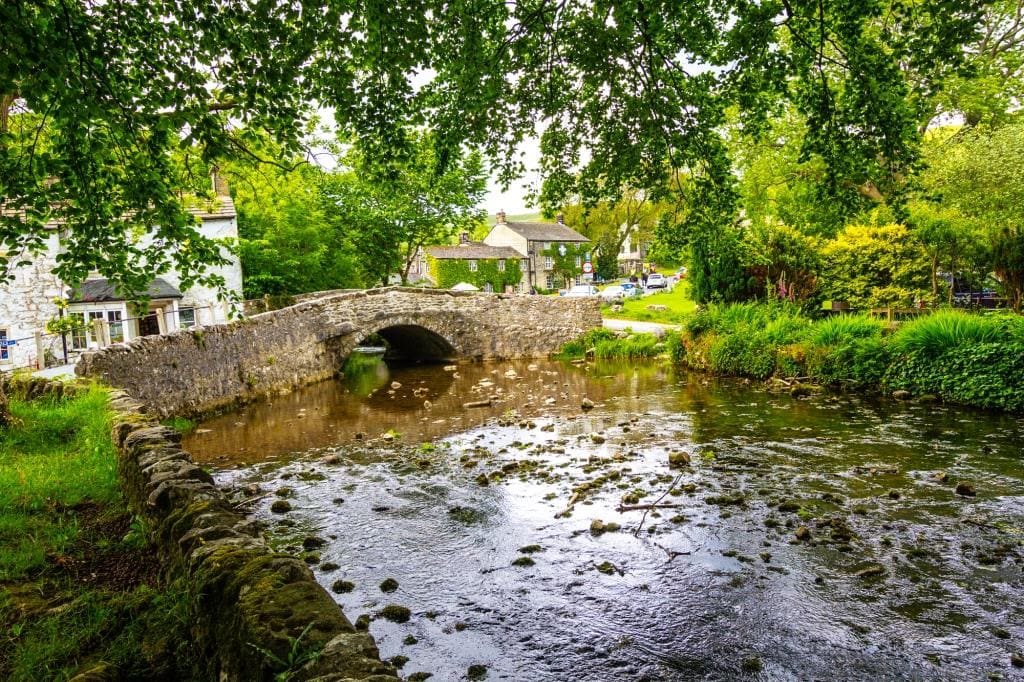
The North of England was a battleground for Vikings and Saxons and had many religious houses, abbeys, monasteries and convents. These were dominantly Catholic but under King VIII in the 1530s many were left in ruins after the Dissolution of the Monasteries.
How many abbeys are there in Yorkshire? There are over 100 Abbeys in Yorkshire including monastic houses, abbey ruins and priories.
Nowadays, most of the abbeys are in various states of ruin with pieces of them being taken to build new villages and homes after the Dissolution. These looming ruins are incredibly atmospheric and some inspired not only great authors like Bram Stoker and many are now used as filming locations.
You won’t find Downton Abbey in Yorkshire even though the TV show places itself in Yorkshire but you will find many other abbeys in Yorkshire to visit.
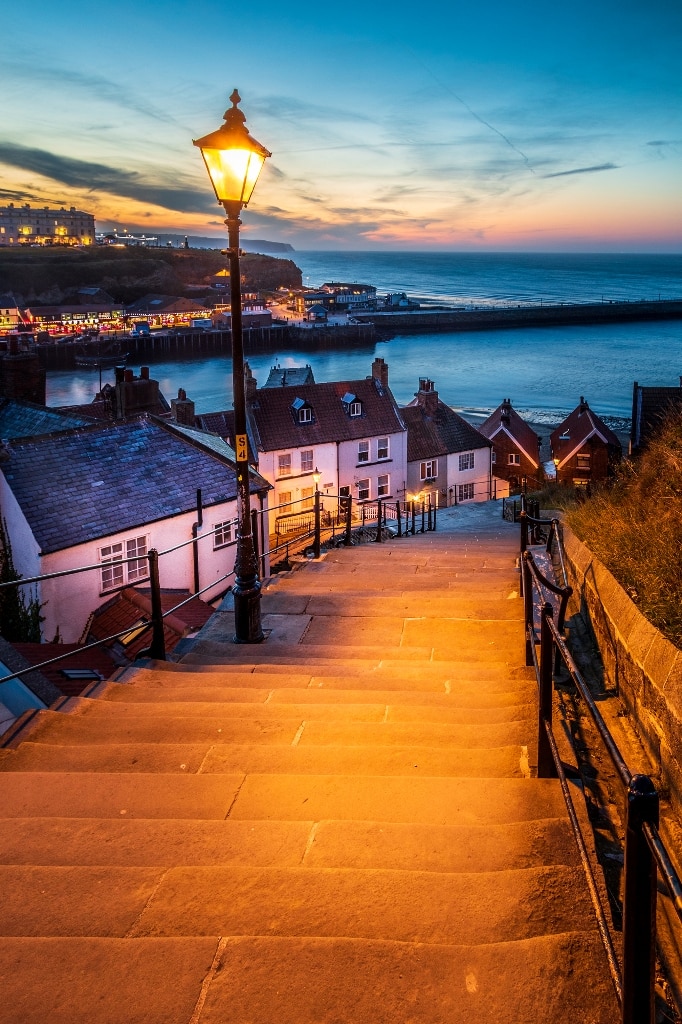
Abbeys are religious buildings that are or rather were occupied by monks or nuns. The different monastic orders of the middle ages include; the Benedictines, Cistercians which were the majority of Abbeys and Monasteries in Yorkshire. There was one Abbey that was Savigniac but it was absorbed into the Cisterian Order and Bolton Abbey was Augustinian until it was dissolved.
The Benedictine order was considered a more ‘relaxed’ order and was founded on the rules of Saint Benedict. His rules were simple, love of Christ and Neighbour, discipline, prayer, taking care of the community, hospitality and peace.
The Cistercian order was founded by a group of monks that did not like the relaxed nature of the Benedictines. Cistercians believed in strict observance of the rules and uniformity. There are 4 Cistercian abbeys in Yorkshire.
The Savigniac order also followed Saint Benedict and focused on building self-sufficient communities but due to financial issues, they eventually joined the Cistercian order.
The Augustinian order is the oldest monastic rule and is still followed to this day this order concentrated on community and God and not material possessions.
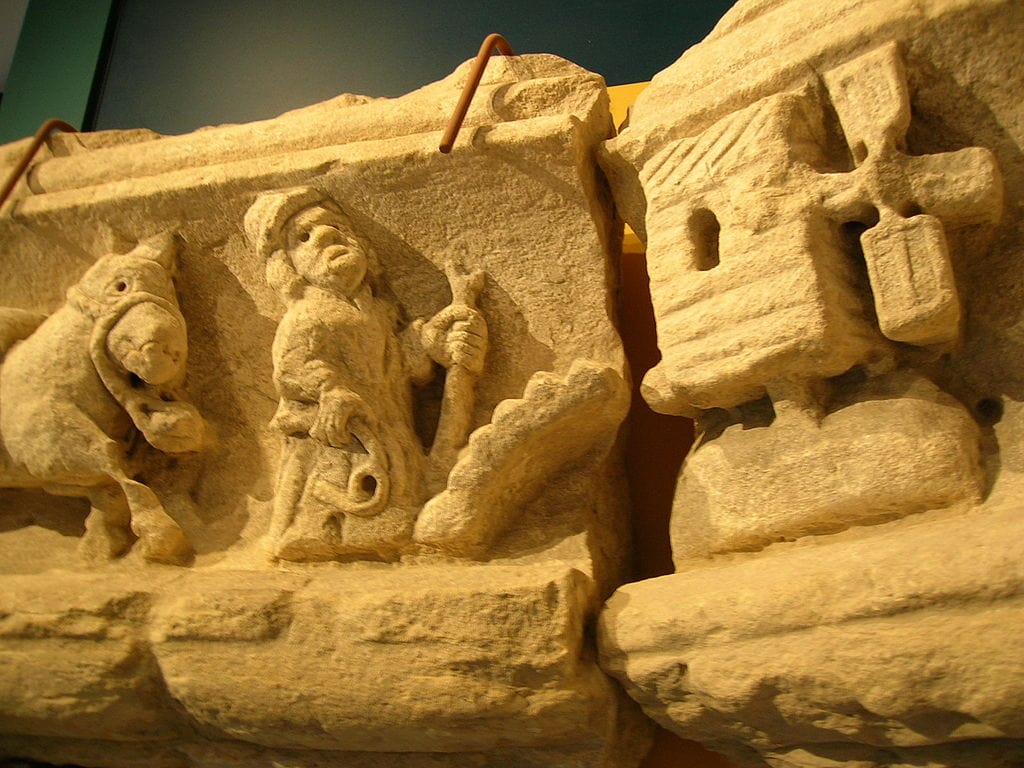
What is an Abbey?
An abbey is a group of buildings housing a monastery or convent, centred on an abbey church or cathedral, and under the direction of an abbot or abbess. The Abbey serves the needs of a religious community in a self-sufficient manner.
16 of the Best Abbeys In Yorkshire
Rievaulx Abbey
Rievaulx was a Cistercian abbey and one of the largest and most important in England. The name Rievaulx comes from Rye (the river) + Norman-French val or valle = “valley” and it is pronounced reevo. The Abbey ruins are found a short drive from the town of Helmsley and Helmsley Castle.
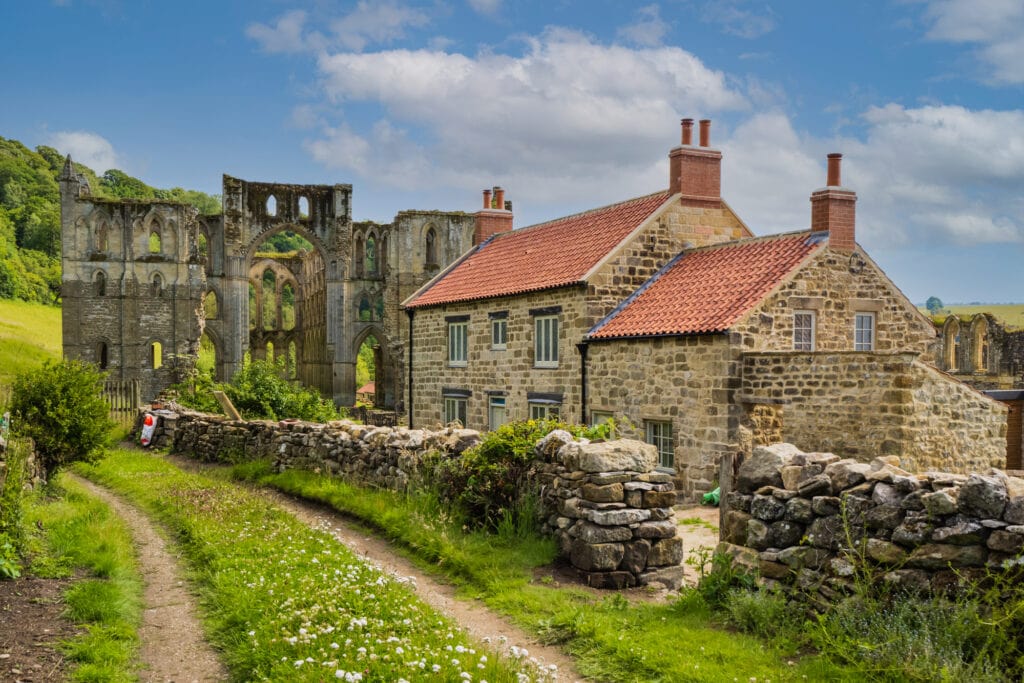
The drive to Rievaulx takes you down a wooded road that is incredibly beautiful and when the ruins rise up behind a few iconic English cottages it is jaw-dropping. This huge abbey ruin contains probably the best-preserved church which has flying buttresses.
The Abbey is only a few miles from the market town of Helmsley which has a ruined castle and a fabulous market.
Rievaulx Abbey a haunting ruin in North Yorkshire
Admission Charge: Adult £12.20 from the English Heritage website
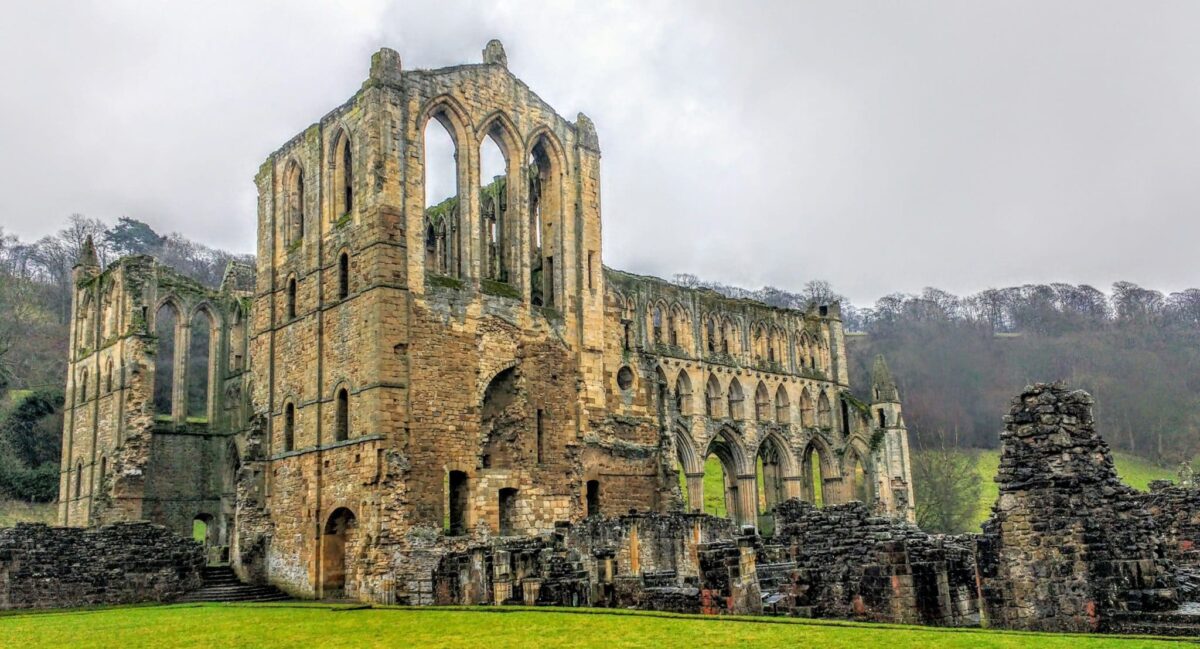
Whitby Abbey
Whitby Abbey stands proudly over the town of Whitby in North Yorkshire. This atmospheric abbey was the inspiration for the novel Count Dracula. The monastery here was founded in 657 AD and the Benedictine abbey remains date to the 13th-century.
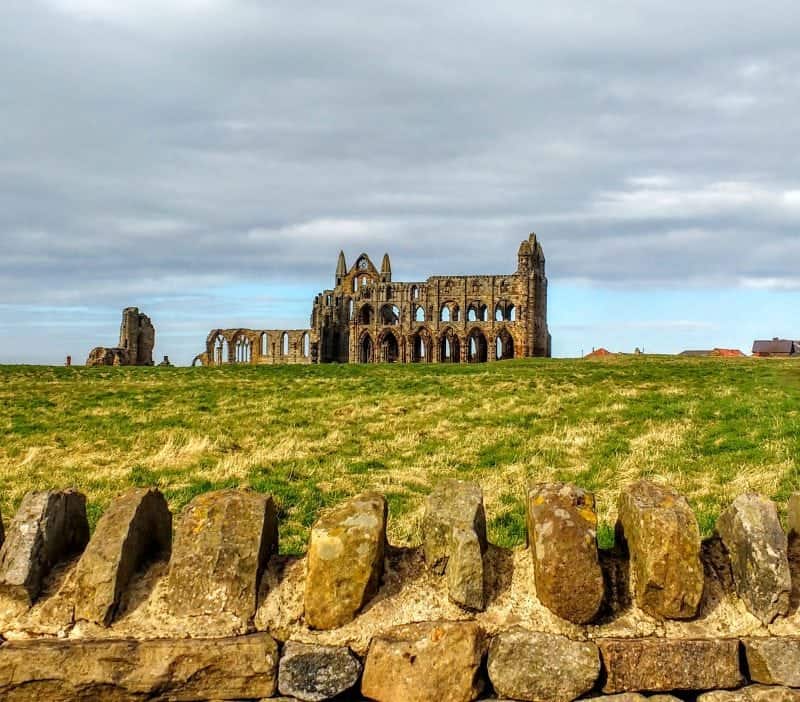
When Stoker visited Whitby in 1890 he fell in love with the town and used several stunning settings in his novel Dracula. St. Mary’s Churchyard and the 199 steps that go down to the town from Whitby Abbey, and of course Whitby Abbey itself all feature in the novel.
14 Things to do in Whitby England
Admission Charge: Adult £11.20 from the English Heritage website
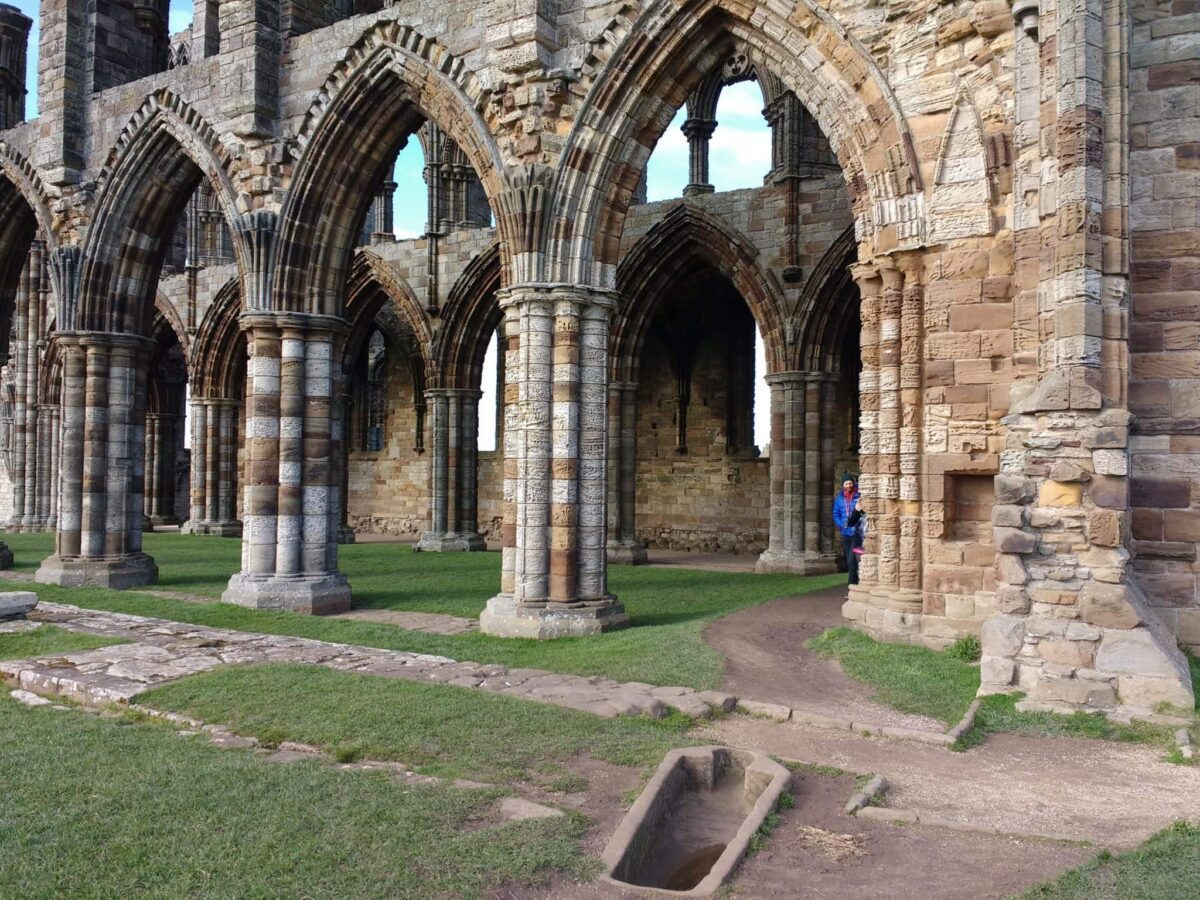
Kirkham Priory
Kirkham Priory is located in the Howardian Hills near Howard Castle just outside of York. Kirkham was an Augustinian Abbey founded in the 1120s.
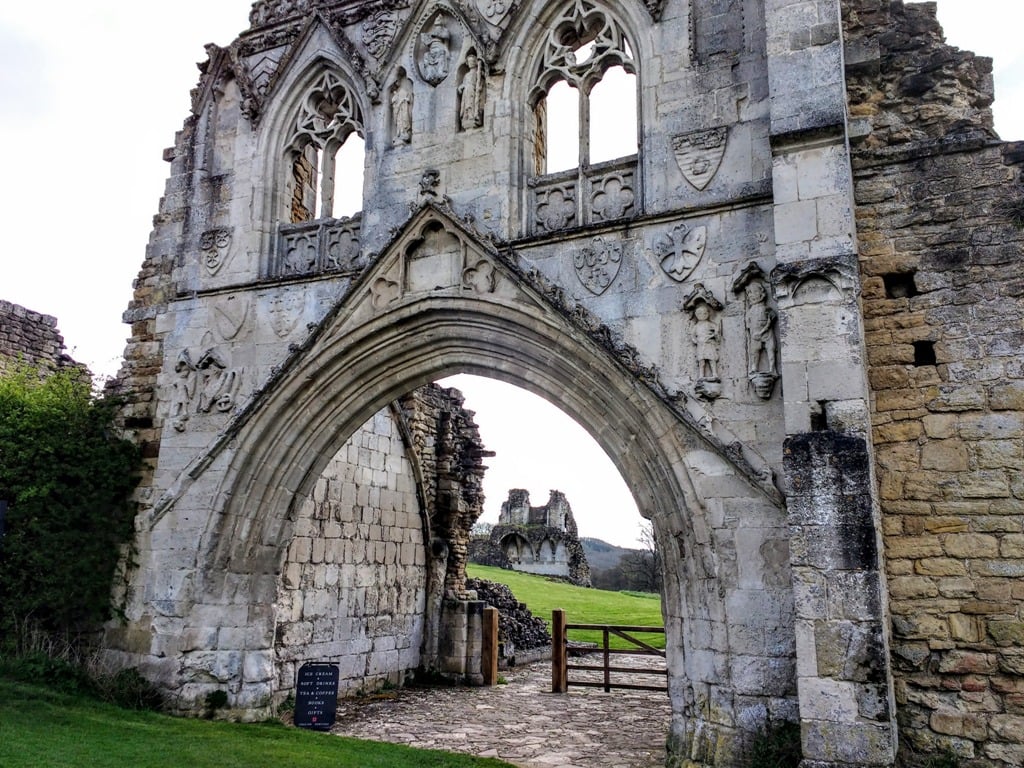
In its day Kirkham rivalled Rievaulx in its wealth and size but by the late 13th century the priory was deeply in debt but it survived until the dissolution.
The Abbey ruins run along the River Derwent and its most stunning feature is the gatehouse which dates back to the 1290’. During WWII the Priory was used as a test site for D-Day landing vehicles and Winston Churchill even visited the ruins.
Admission Charge: Adult £6.20 English Heritage Website
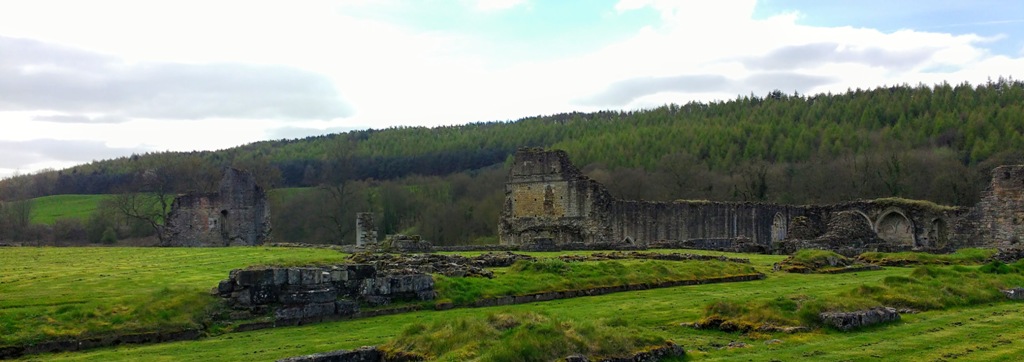
Fountains Abbey and Studley Royal Water Garden
Studley Royal Park, including the ruins of Fountains Abbey, was one of the first sites in the UK to be noted as a UNESCO World Heritage Site and one of the best preserved and largest Cistercian abbey ruins in Yorkshire and England.
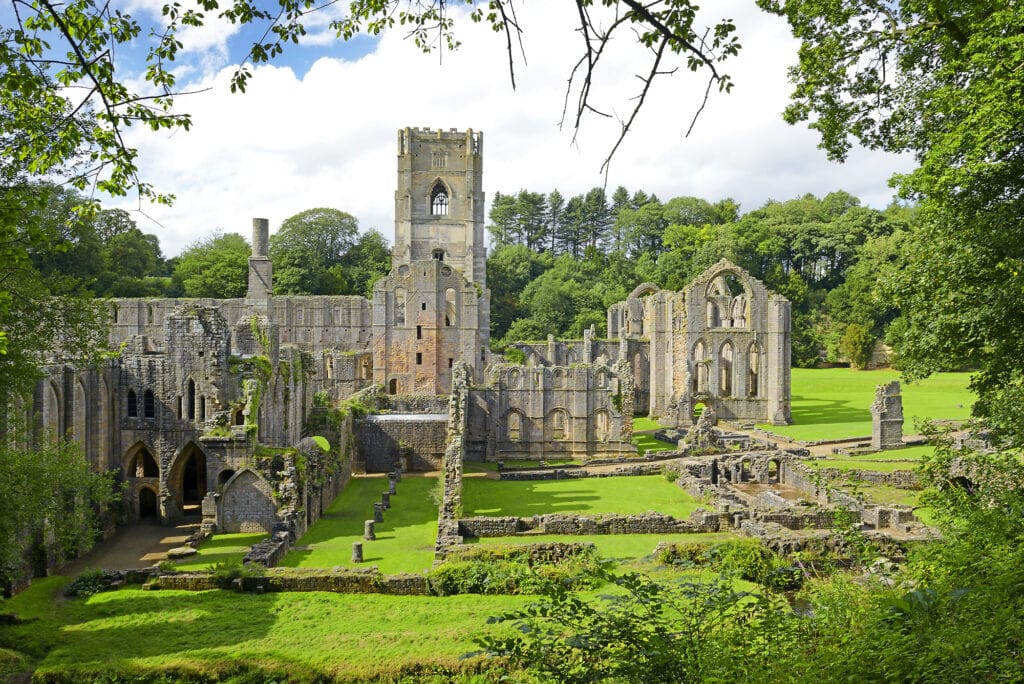
There are two distinct parts to the Fountains Abbey and Studley Royal estate the Studley Royal water garden and the ruins of Fountains Abbey.
Why was Fountains abbey destroyed? Founded in 1132, the abbey operated for 407 years, becoming one of the wealthiest monasteries in England until its dissolution, by order of Henry VIII, in 1539.T
The cloister had arcades of black marble and white sandstone is in the centre of the Abbey. There is a massive vaulted substructure known as the cellarium. You will find a small museum in the Porter’s House which will explain the site and holds artefacts from various archaeological digs.
Admission Charge: Adult £18.70 National Trust
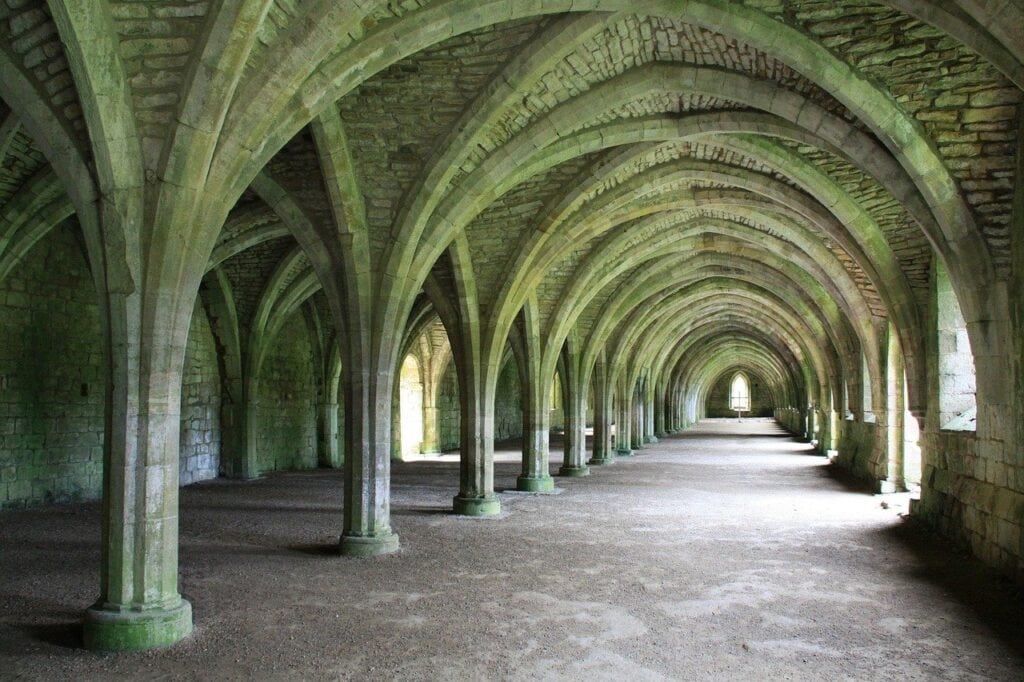
Bolton Priory
Bolton Priory is one of the finest medieval churches in the north of England. Since its foundation in the twelfth century, it has been a site of continuous Christian worship, surviving Scottish raids, the Black Death, the Dissolution of the Monasteries and the religious turbulence of later centuries.
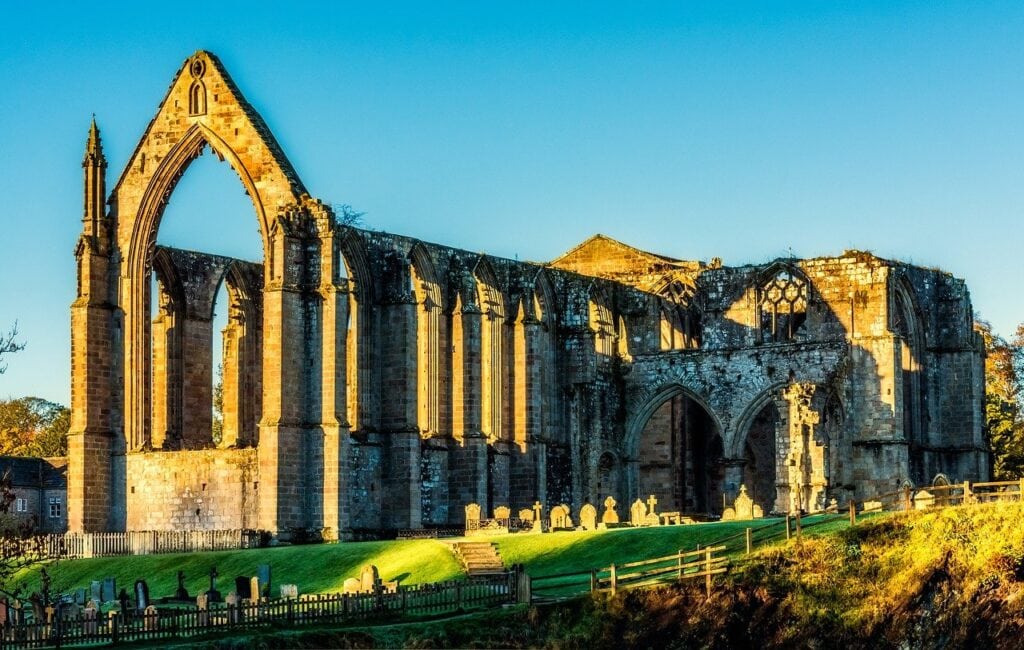
One of the most picturesque Augustinian abbeys in Yorkshire it dates back to the 12th century. The Priory was ‘Dissolved’ in 1539 and the buildings were stripped of furnishings and the roof lead, except the nave was converted to the Parish Church serving the newly formed Protestant Church of England which still stands today serving modern churchgoers.
Admission Charge: £12.50 – £15.00 the lesser price is available by booking online and both prices include parking Bolton Priory
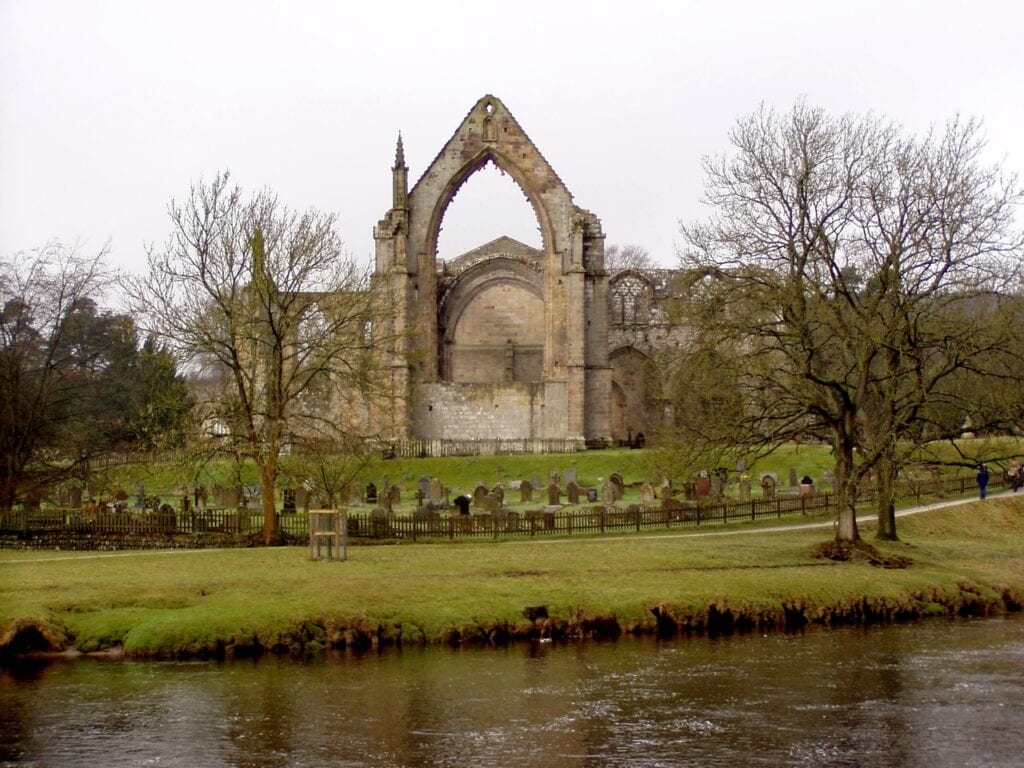
Jervaulx Abbey
Jervaulx Abbey was founded by the Cistercians in 1156 and today is privately owned by the Burdon family It is located on the edge of the Yorkshire Dales National Park. There is no admission charge but there is an honesty box for donations.
The Burdons say that Jervaulx is a “family run ancient monument we wanted to stand proud and keep the peace and tranquillity that the Abbey would have always stood for.”
Set in the midst of the beautiful Yorkshire Dales, Jervaulx Abbey’s dramatic, yet tranquil ambience has won the hearts of many of its visitors. The Abbey is open all year round and is renowned for its horticultural significance. There are over 180 varieties of wildflowers growing throughout the ruins and its grounds.
Admission Charge: by Honesty Box Jervaulx Abbey
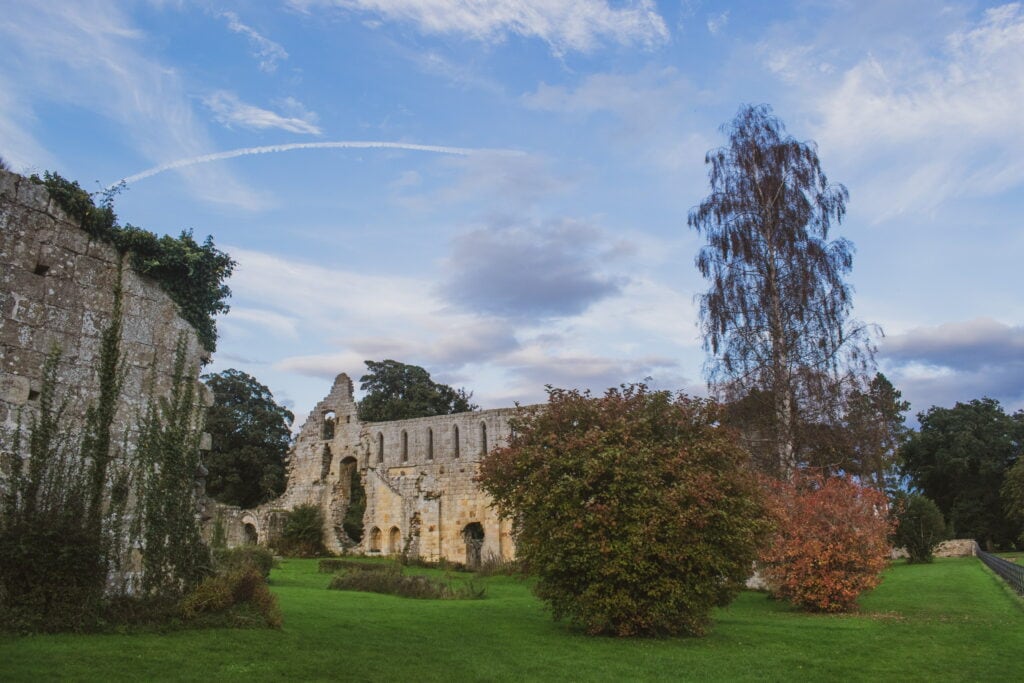
Mount Grace Priory, House and Gardens
Mount Grace Priory is a picturesque 14th-century Carthusian monastery on the edge of the North York Moors founded in 1398, you can see the ruins of the church. Austere furnishings and isolated individual cells kept the monks living as hermits within the larger community. One cell has been rebuilt to show how the monks lived and worked.
Admission Charge: Adult £11.20 English Heritage
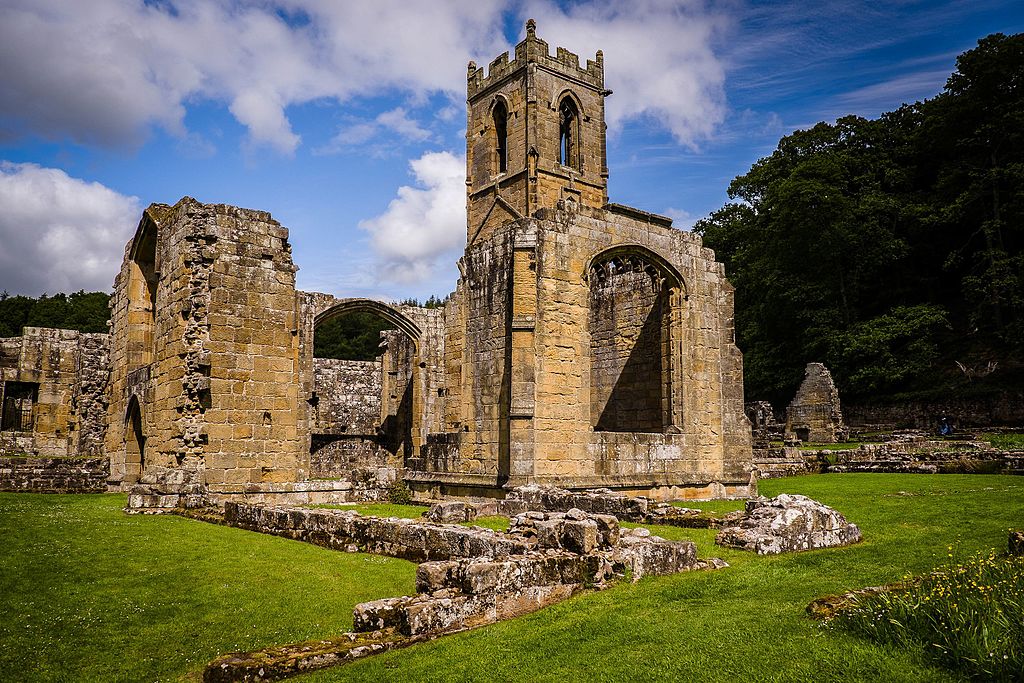
Coverham Abbey
Coverham Abbey was a Premonstratensian monastic house the abbey was badly damaged in a Scottish raid in 1331 but managed to recover and by the end of the 14th century, there were 15 monks in residence, under the leadership of an abbot.
Coverham Abbey on the banks of the River Coer isn’t open to the public but you can see its ruins from several vantage points: from the top of the field next to the church, from the driveway and the short path from the bridge, and from across the river.
It was never a huge order, founded by monks from northern France and probably housing fewer than 20 monks clad in white habits, known as the ‘White Canons’. It’s now in private hands, with a home built from some of the old stones. The original elegant arches can still be seen.
Nearby stands 14th century Trinity Church, no longer in use but still open to visitors. It’s tiny, with plenty of interesting features to see. There’s an anglo-Saxon stone, now used as a lintel over the door, and a carving in the stone door frame.
Admission Charge: Adults £3.50, Coverham Abbey
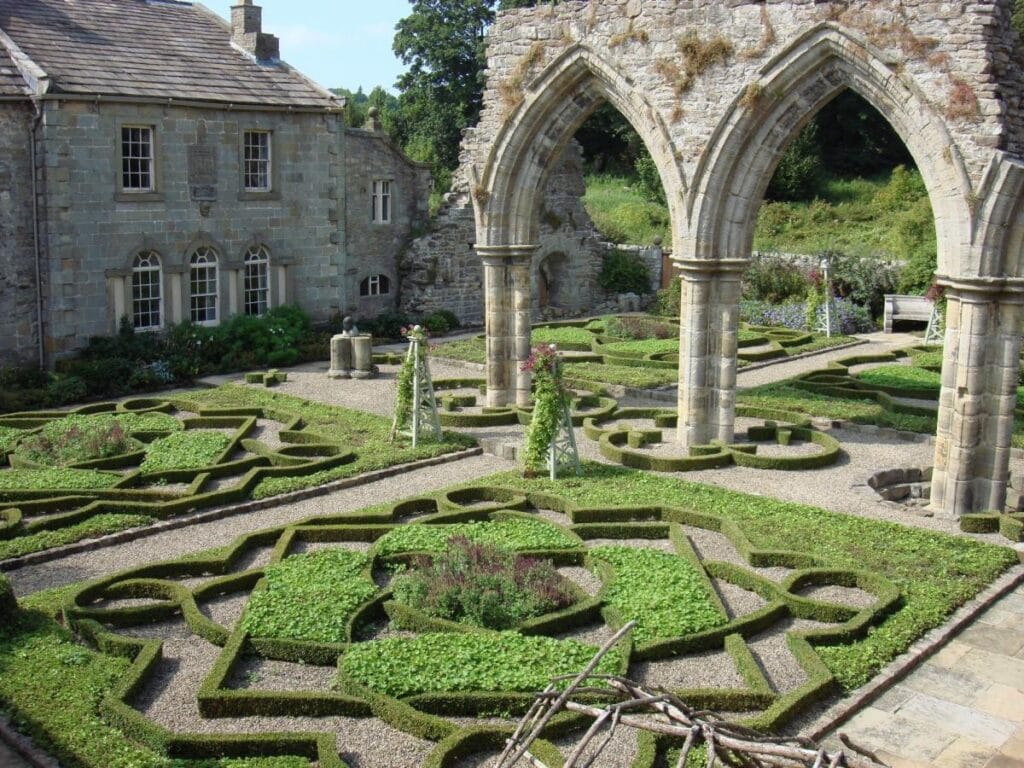
St. Mary’s Abbey
Located in the city centre of York in Museum Gardens, St Mary’s Abbey was first built in 1088. The ruins you see today are all that remains of one of the wealthiest and most powerful Benedictine monasteries in England.
Its story ties together two of the most important events in English history begun by William the Conqueror to reinforce his hold on the north after 1066 and ended by Henry the VIII in the Dissolution of the Monasteries.
The ruins are surrounded by the stone walls of the Museum gardens which were built around 1260 and are the most complete set of Abbey walls in England.
Admission Charge: Free Entry St. Mary’s Abbey
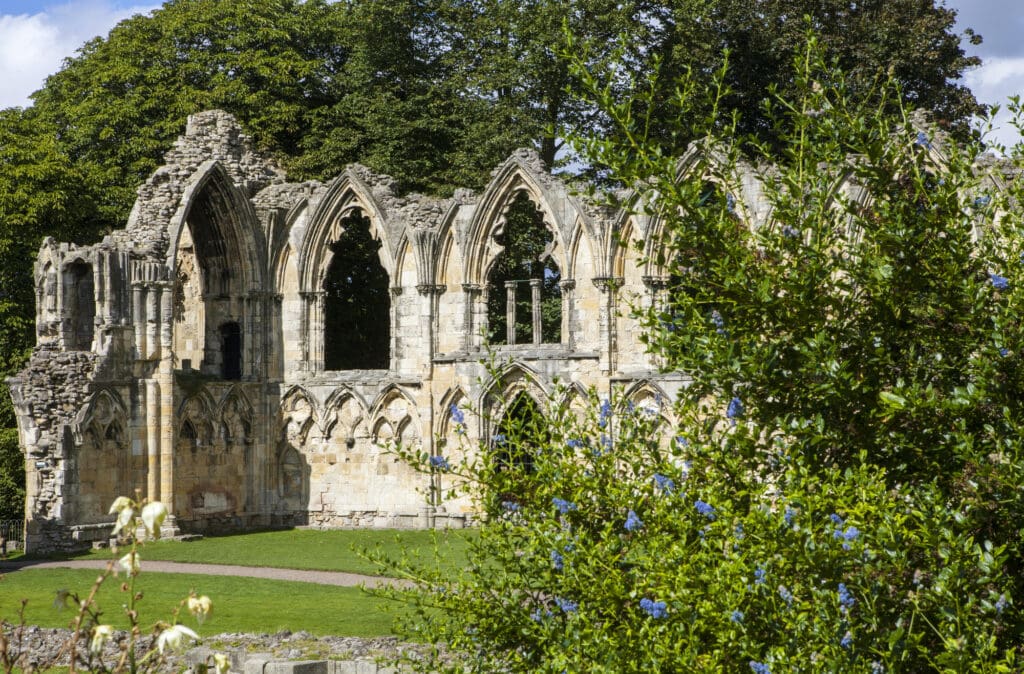
Kirkstall Abbey
Kirkstall Abbey was founded in the 1150s by the Cistercians and is one of the best preserved Cistercian Abbeys in the country. There is a small museum in the gatehouse which explains the story of the Abbey ruins.
The Abbey is a Grade I listed building and Scheduled Ancient Monument and contains a park and playground for the children from March until November it hosts a farmer’s market every weekend. The Abbey is free for anyone who lives in Leeds.
Admission: Adult £5.00 Kirkstall Abbey
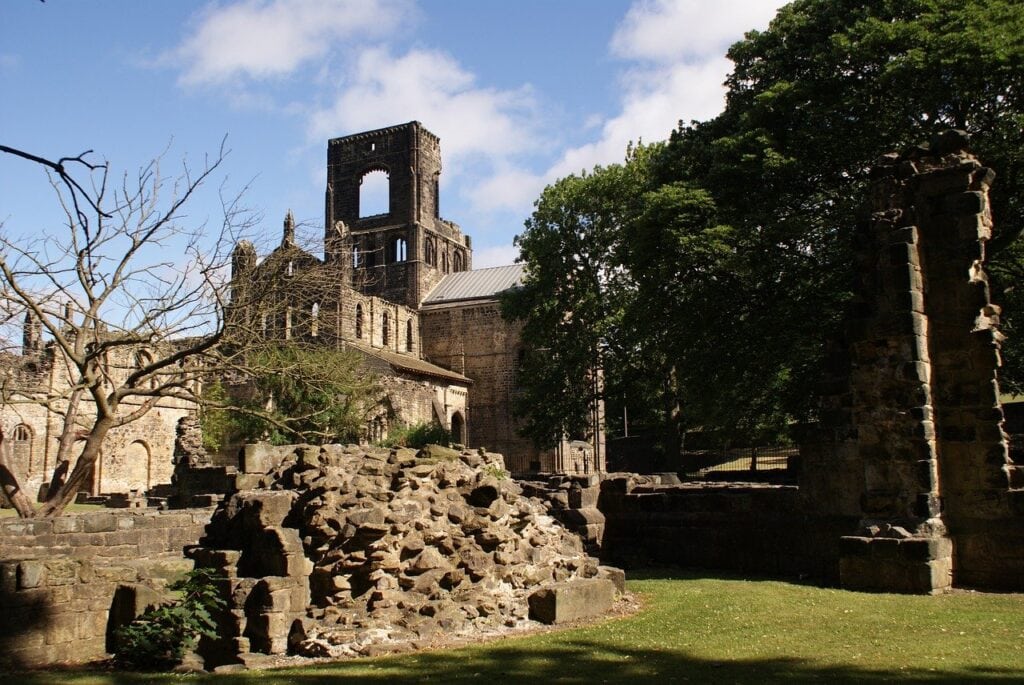
Monk Bretton Priory
On the edge of Barnsley stands the remains of Monk Bretton Priory, a Cluniac monastery founded in the 12th century. Today visitors can see the well-marked ground plan, the almost complete west range and the 15th-century gatehouse.
The priory owned properties across South Yorkshire, with rights over five parish churches, and worked coal and ironstone in the Barnsley area. In 1295 it housed 13 monks and a prior; there was exactly the same number at its closure in November 1538 during the Dissolution of the Monasteries.
Admission Charge: Free English Heritage
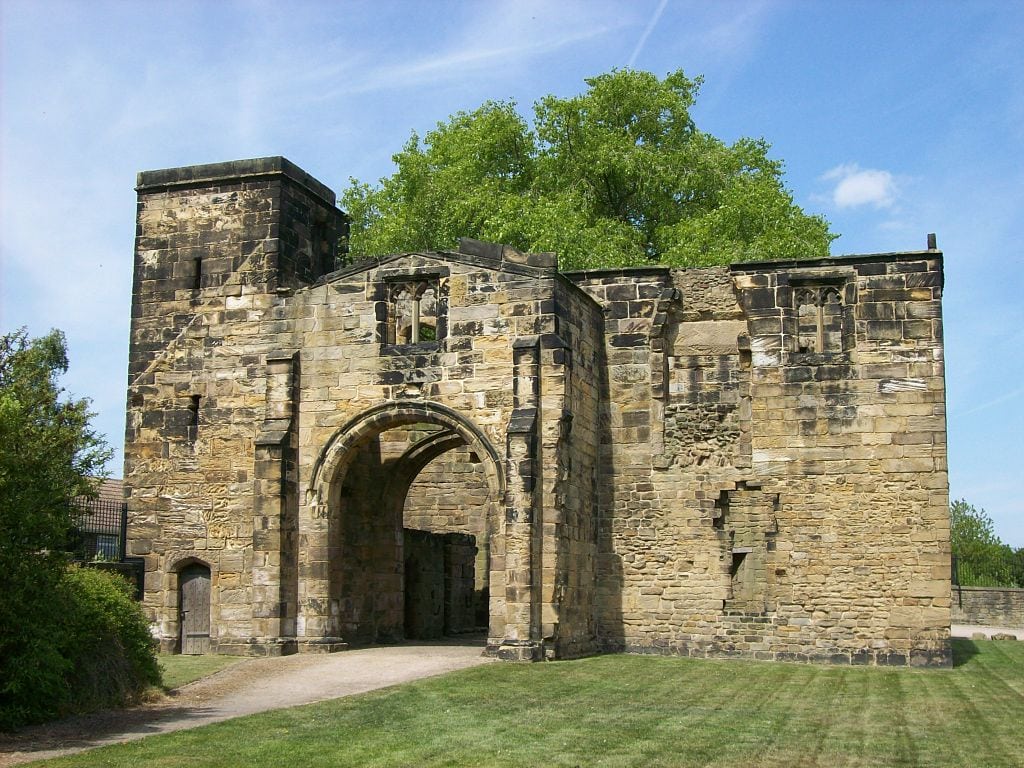
Roche Abbey
Roche Abbey can be found in South Yorkshire in Maltby it is a beautiful 12th-century Cistercian monastery in a Beautiful valley landscaped by ‘Capability’ Brown in the 18th Century, The abbey has one of the best-preserved ground plans of any Cistercian monastic site, and you can see the soaring early Gothic transepts that still survive to their original height and are ranked in importance with the finest early Gothic architecture in Britain. There is a stream running through the site, and on the other side, you can see the remains of a kitchen area and the abbot’s quarters.
Admission Charge: Adults £5.60 Website
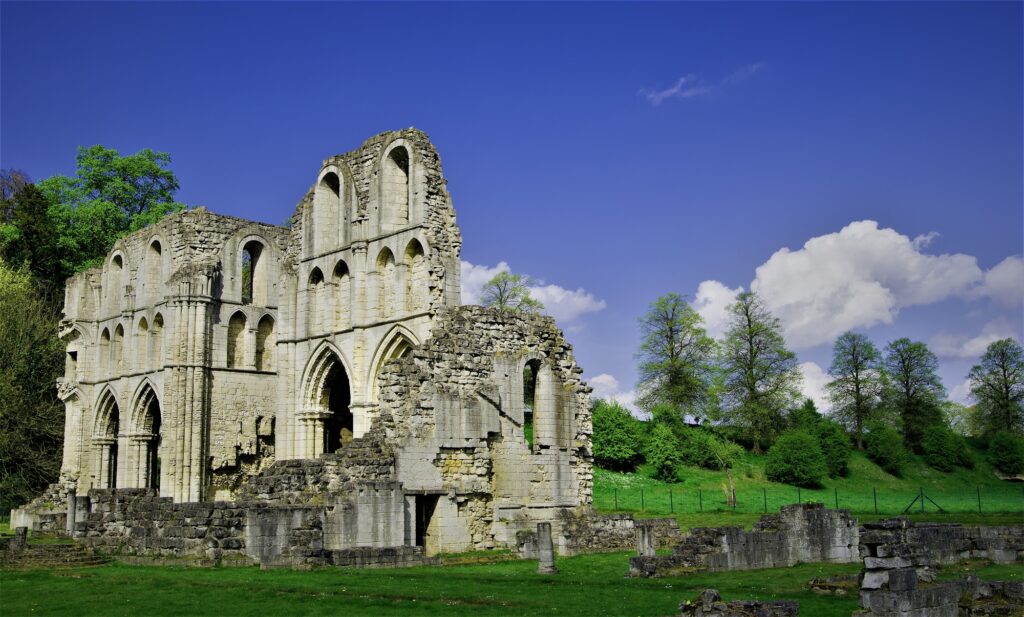
Byland Abbey
Byland Abbey was originally a Savignac order, that became Cistercian in 1147. Byland’s stunning medieval floor tiles survive to this day and there is half of a large rose window remaining that was the inspiration for the one at York Minster. One of the beautiful features of Byland Abbey is the stunning medieval floor tiles, which you can still walk around today. The impressive lower half of a large rose window was the inspiration for the rose window at York Minster.
Admission Charge: Free Entry English Heritage
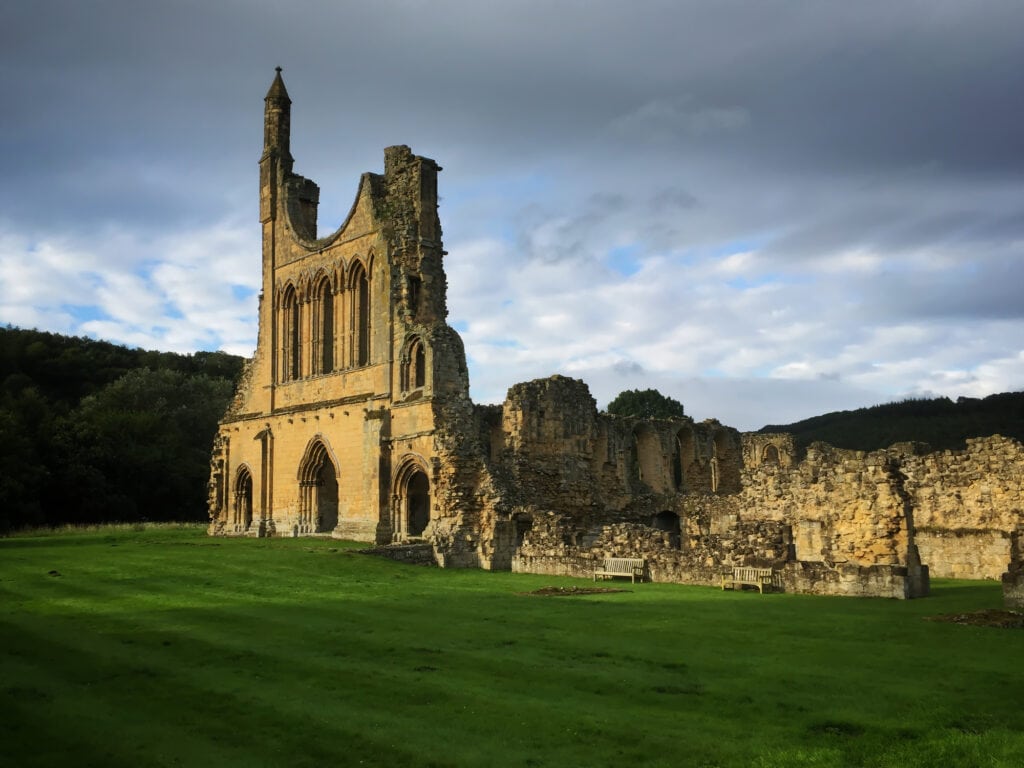
Gisborough Priory
Not much is left of Gisborough Priory, the Augustinian abbey was founded in 1119 and was the fourth-richest religious house in Yorkshire at the time of the Dissolution of the Monasteries. Not much is left of the priory today, with the large east end of the church (built in the 14th-century) dominating the remains.
Admission Charge: Free entry English Heritage
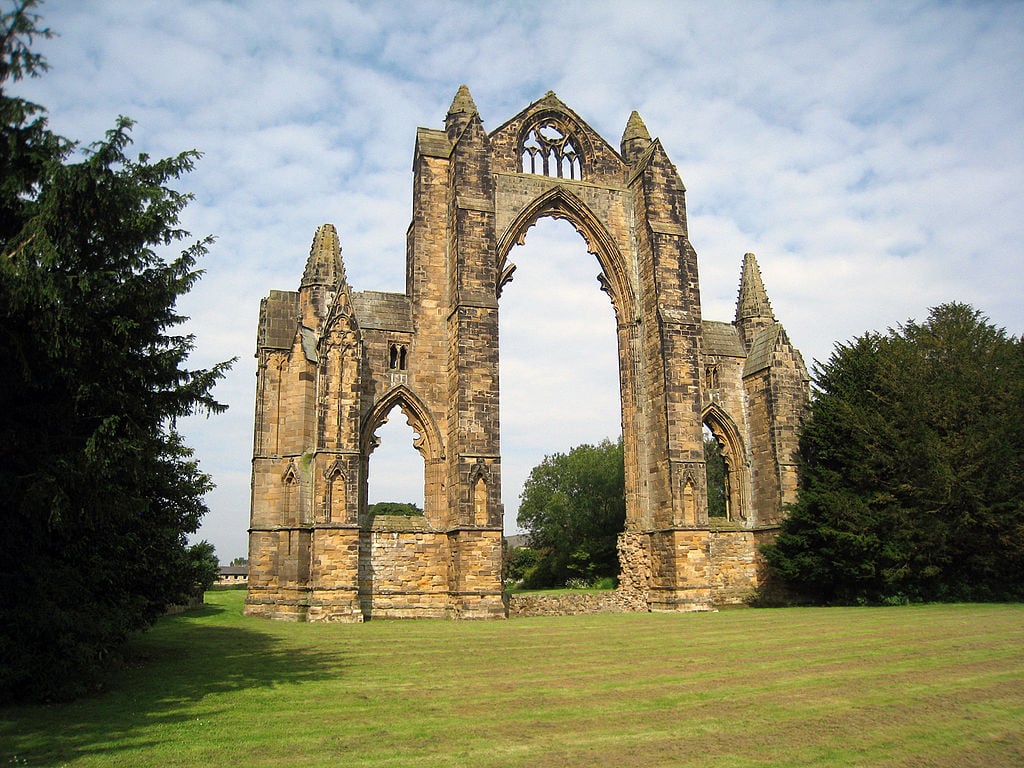
Easby Abbey
Easby Abbey was a Premonstratensian priory built in 1152 and the Parish church is still used to this day. Easby Abbey is situated in a lovely dell in the wooded countryside but within sight of Richmond Castle, and there is a path along the river joining the abbey and castle.
Admission Charge: Free Entry English Heritage
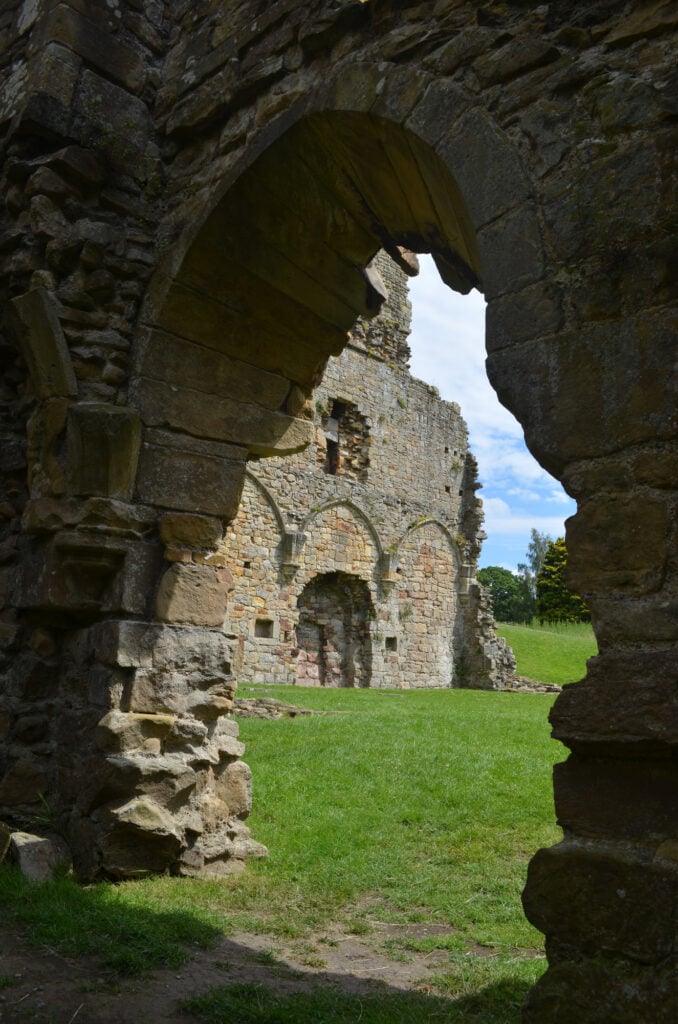
Grey Friars
At Grey Friars Franciscan Friary all that remains is the 15th-century tower is all that remains of the friary, established in 1257. The friary patron was Ralph fitz Randal, Lord of Middleham, whose heart was buried in the friary church. The Friary was surrendered to the king in 1539 at the suppression of the monasteries.
Over the following years, the buildings were put to a number of different uses and in 1643 they were severely damaged by Royalist forces during the siege of Gloucester.
By 1721 only the nave and its north aisle survived and later in the 18th-century houses were built within the walls. In 1810 a large house was built into the west end of the medieval remains and this is now a public library.
Grey Friars Tower stands in a public park a short stroll from the town’s marketplace.
Admission Charge: Free English Heritage
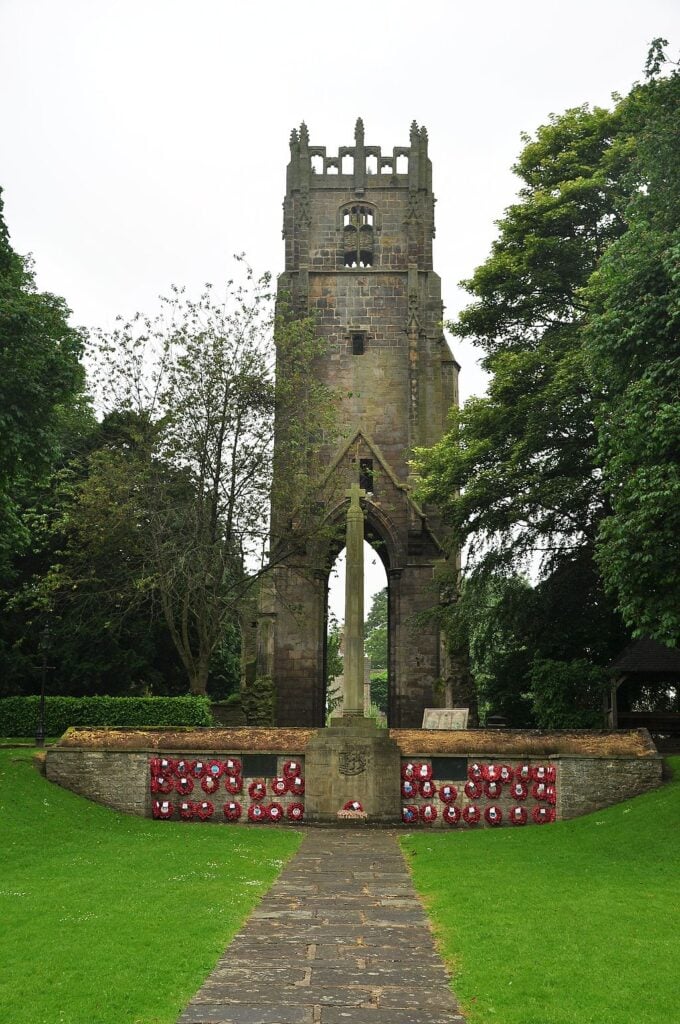
Yorkshire is home to some truly spectacular ruined abbeys. There is so much history to explore and enjoy in Yorkshire, and visiting these abbeys give a real insight into how people lived in this area in the medieval era. I love visiting these abbey ruins in Yorkshire, and I hope this helps in planning a visit to some (or all!) of these Yorkshire abbeys too!
Have you been to any of these Yorkshire abbeys before? Which one was your favourite?
You might also like
Whitby Abbey Exploring the gothic masterpiece
Waterfalls in the Yorkshire Dales
37 Fabulous things to do in York
19 Magnificient Cathedrals in England to see
Helmsley Castle an atmospheric ruin in North Yorkshire
The Top 24 Vikings UK locations to visit
Pin it to save it
